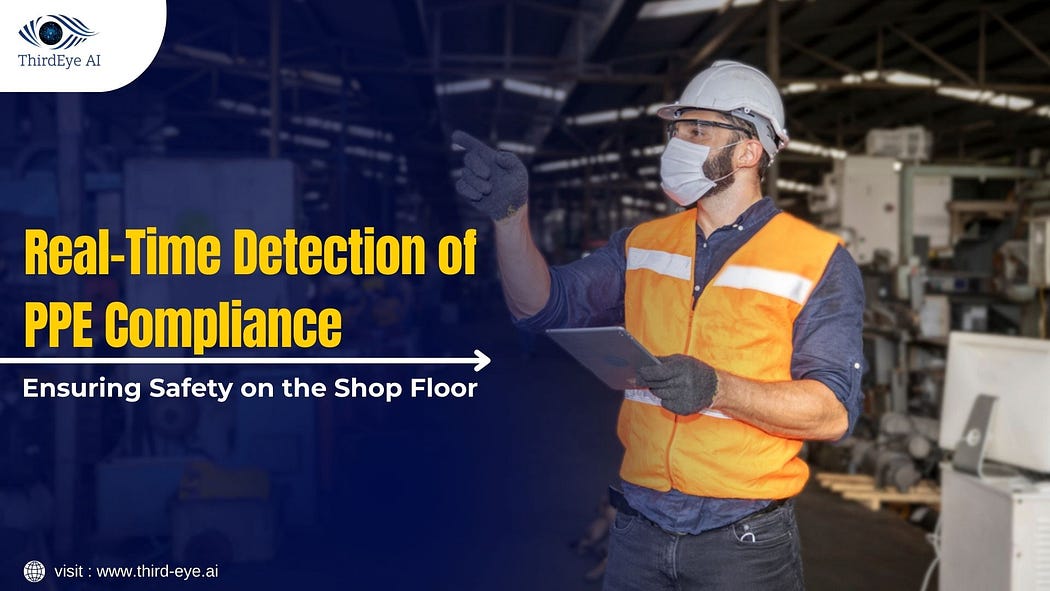 In manufacturing environments, safety is paramount. Workers face potential hazards every day, and ensuring that they wear the necessary Personal Protective Equipment (PPE) is a critical step in reducing the risk of injuries. However, manually monitoring PPE compliance can be inefficient and prone to oversight. This is where AI-powered surveillance and computer vision algorithms come in, offering a more reliable, efficient, and proactive approach to PPE monitoring.
In manufacturing environments, safety is paramount. Workers face potential hazards every day, and ensuring that they wear the necessary Personal Protective Equipment (PPE) is a critical step in reducing the risk of injuries. However, manually monitoring PPE compliance can be inefficient and prone to oversight. This is where AI-powered surveillance and computer vision algorithms come in, offering a more reliable, efficient, and proactive approach to PPE monitoring.
AI-Powered CCTV Monitoring: Safeguarding the Workplace
At the core of this approach are high-definition CCTV cameras, placed at strategic locations throughout the manufacturing site. These cameras cover key areas such as entrances, workstations, machinery zones, and production lines. The cameras provide continuous video feeds of workers in real-time, ensuring no part of the facility is left unmonitored.
The live video feed is analyzed by AI-driven computer vision, which evaluates each frame and identifies workers wearing the required PPE, like helmets, gloves, safety vests, and shoes. By leveraging machine learning models trained on vast amounts of data, the system accurately identifies the necessary safety gear for each task.
Real-Time PPE Detection: Accurate and Instant Feedback
The technology doesn’t just detect PPE; it provides continuous monitoring and real-time insights into compliance. As workers move about the facility, it scans for PPE adherence. If a worker fails to wear the required safety gear, such as a helmet, gloves, or shoes, the detection process immediately flags the violation.
For example, if a worker momentarily removes their helmet while operating machinery, the system detects this and highlights it as a violation. This constant vigilance ensures that no safety lapse goes unnoticed, making the entire process more efficient and effective.
Instant Alerts: Ensuring Immediate Action
Once a violation is detected, an instant alert is triggered. The alert can come in the form of audible alarms, push notifications to safety officers, or visual cues overlaid on the live video feed.
The instant feedback drives immediate corrective action, allowing workers to rectify their compliance issues as soon as they are identified. Supervisors can quickly respond to the situation, minimizing exposure to potential hazards and ensuring a safer working environment.
Proactive Safety: Identifying Unsafe Acts and Conditions
In addition to ensuring PPE compliance, the technology actively monitors for unsafe acts or unsafe conditions. For instance, it can identify workers operating machinery without proper guards, walking in restricted areas, or handling hazardous materials without the appropriate protective gear.
By analyzing real-time video, this approach identifies these risks and issues alerting for immediate attention. This proactive monitoring helps reduce accidents by addressing problems before they escalate into safety incidents.
Streamlining Operations: Automating Safety Checks
Traditionally, monitoring PPE compliance required regular manual inspections, which were often time-consuming and error-prone. With AI-powered monitoring, these inspections become automated, significantly reducing the workload for safety officers and freeing them to focus on other critical tasks such as hazard assessments and safety training.
Automation not only makes the process more efficient but also ensures that compliance is continuously checked, leaving no room for oversight.
Accountability and Transparency: Tracking Compliance
One of the major advantages of using this technology is its ability to track compliance incidents. Each violation is logged with detailed information, such as the time, location, and a snapshot from the video footage. This creates a transparent record of safety breaches and the actions taken to address them.
This documentation is invaluable during audits or regulatory inspections. It provides clear evidence of the company’s efforts to maintain a safe working environment, as well as insights into areas for improvement in safety practices.
Regulatory Compliance: Meeting Safety Standards
Manufacturing environments are heavily regulated, and adhering to safety regulations is critical to avoid costly penalties. With the AI-powered surveillance system, facilities ensure that they consistently meet safety standards by providing continuous, real-time monitoring of PPE use.
By logging every compliance incident and generating detailed reports, manufacturers stay ahead of regulatory requirements. This proactive approach not only helps avoid penalties but also continuously improves safety protocols, ensuring compliance with industry standards.
Conclusion: Smarter, Safer, and More Efficient Manufacturing
Integrating AI-powered CCTV surveillance and computer vision-based PPE monitoring offers a smarter and more efficient way to ensure workplace safety. By offering continuous monitoring and real-time alerts for PPE compliance violations, manufacturers can significantly reduce the risk of accidents and injuries.
This solution enhances operational efficiency, accountability, and regulatory compliance, creating a safer environment for workers and allowing businesses to stay ahead of safety regulations. Through AI-driven vigilance, manufacturers can make workplaces safer, smarter, and more efficient.
Comments